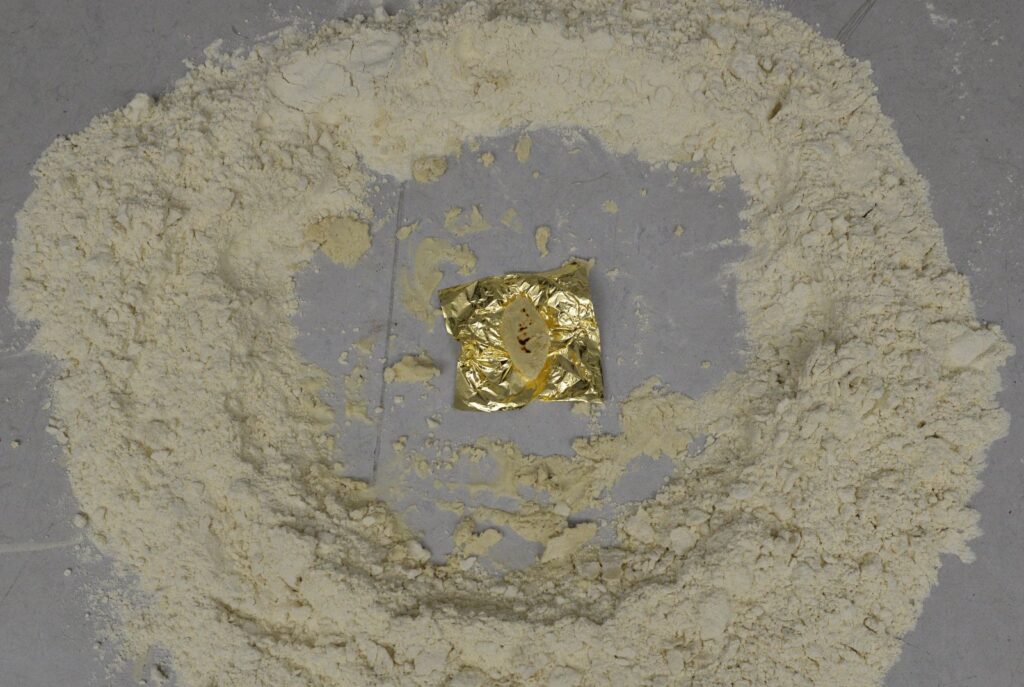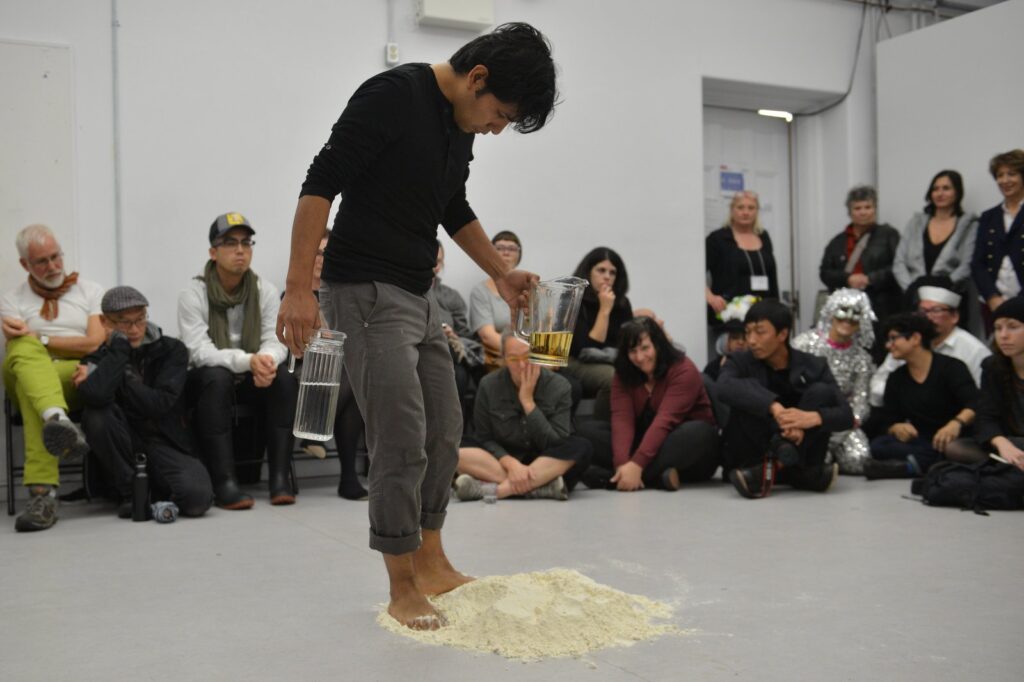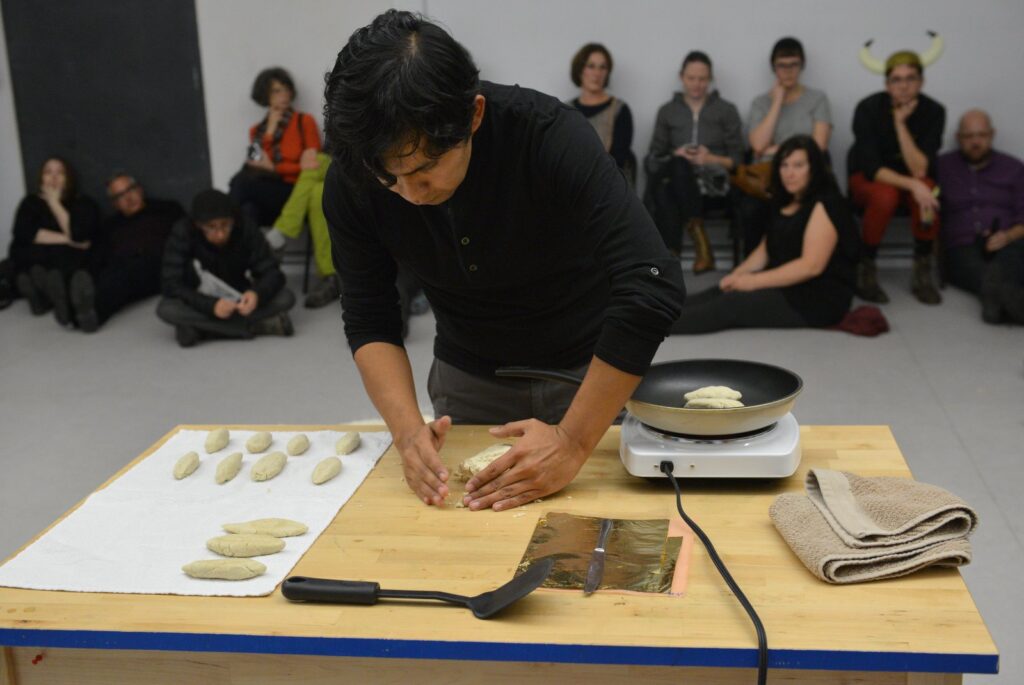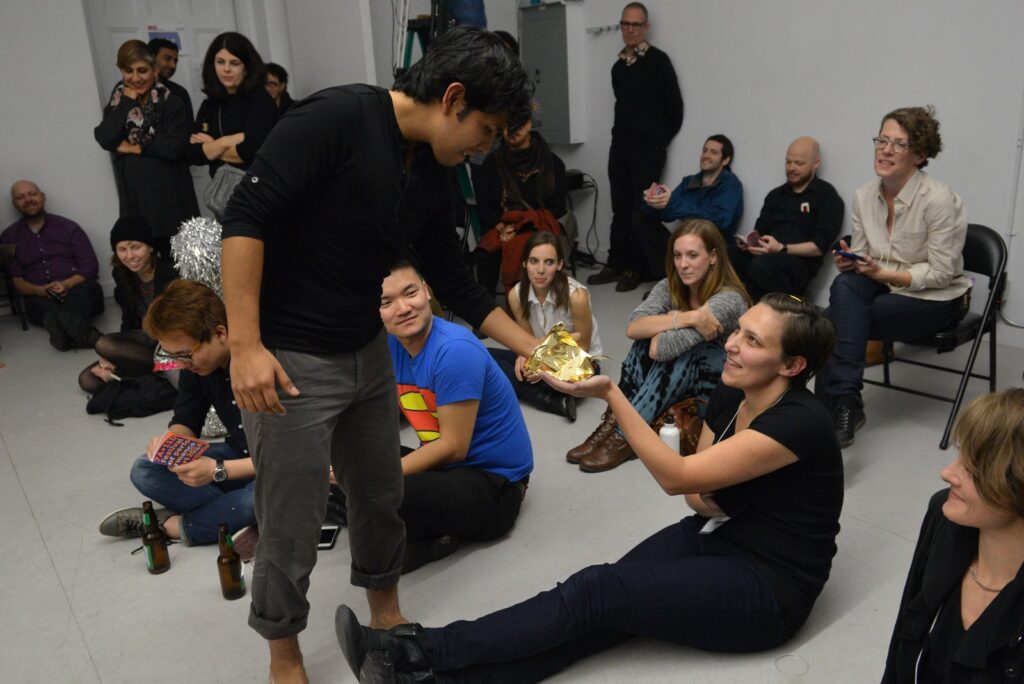By Jenn Snider

There is a strong tradition of using the preparation and service of food in art as a method of connecting and enacting the power of social ritual and politics (think, for example of the well-known series by Rirkrit Tiravanija, which began in 1990 with pad thai, or the more recent A Party of Politics/The River Crab Banquet by Ai Weiwei in 2010). Certainly, food on its own is woven ritualistically, culturally, not to mention physiologically, into the universal human experience. In this way, food is already performative and in many ways theatrical, so when used in the creation of performance there is a natural convergence and a staging complete with tools, methods, and materials. Using food in performance can also come charged with a set of codified behaviours and social etiquette as well as certain notions of health and hygiene.
With all this in mind we move to Friday night of the festival, as Fausto Méndez Luna is about to present us with something a bit different. Cocina incoherente [Incoherent cuisine] is an installation-in-process in which Luna performs actions and incorporates objects that challenge the connotations of food (as I’ve explained above) in order to create a situation that operates unusually yet still maintains some of the symbolic coherence so closely tied to its preparation.
To begin Luna brings a bag of corn flour to the center of the room. Dumping enough onto the floor to create a significant mound, he brings over a pitcher of water and a second jug of oil. Using his heel, he makes a divot or bowl in the center of the flour, into which he pours some water, and then some oil. With pant legs rolled, he steps barefoot into the mixture, and begins to knead with his feet, squishing the dough between his toes. Watching this process, the texture and his relationship to the material is very earthen, like that of walking in sand. It also, of course, broaches the borders of food and the unsanitary. Labouring in circular motions, he continues to add more liquids and mix with his feet until a good sized ball of dough has formed.


In his artist statement, Luna described the setting of his performance as akin to the laboratory within which he mixes substances in the production of signs. Here he has committed to the use of corn flour, gold leaf, and maple leaf as ingredients in his experiment of the gastronomic absurd, the latter a clear gesture of hospitality and cooperation to Canada. Moving from the center of the room to the windows and opening them all wide, Luna turns off the lights in the room and begins to slowly pull a long orange electrical cable that extends out the window. Gathering to watch, we see he is slowing dragging a bright light bulb across the yard outside. When the bulb unfortunately breaks, Luna does not stop pulling. When it finally reaches the windowsill he gathers it up, rearranges the scene and sets about preparing the next stage of his incongruous meal. Perhaps as an improvisational action, Luna moves to the floor with the broken bulb and gathers the broken pieces onto a platter and bathes them in delicious maple syrup to create a very tantalizingly painful side-dish. As I watch this I wonder how the lit bulb would have been used had it arrived in one piece. It’s worth considering, as without this triumphant moment of the reveal the action feels flat despite maintaining its entitled incoherence. Thinking it would have illuminated the dark room brilliantly and created dramatic shadows, I ponder this for a little while as I watch Luna prepare his next step.


Standing at a table equipped with a hotplate, a spatula and towel, and a stack of gold leaf, Luna is rolling the corn dough into a dozen or so palm-sized nubs. Observing the artists movements and his calm and somewhat detached arrangement of his materials, I pass the time by considering the shape into which he has formed the dough, and wonder about its likely symbolism. Reminded of the shape used by artist Ana Mendieta in her series Silueta to recall the form of the body, so often presented in relief or absence within plots of earth to evoke issues of displacement, I wonder if in his performance, Luna’s private symbolism resonates with this association, but I find no other clues.
Finally, the smell of frying hot corn fills the room and steams rises off the cakes. Luna plucks each off the hot pan and presents it on a bed of gold leaf to audience members sitting nearby. He is methodical and delicate in his movements, and it is clear he is taking great care. This presentation of a rough-hewn cake on a fragile gold leaf is a beautiful and unlikely sight. Each person who is given one of these strange and disjointed gifts cradles it carefully. Only one person ventures to try a bite. Luna does not instruct anyone any differently, and as he places the last cake on its bed of gold and lays the piece in the middle of the flour circle he speaks quietly and bows to indicate he is done. I’m left with many questions, but warmed by the generosity of his careful attention.
